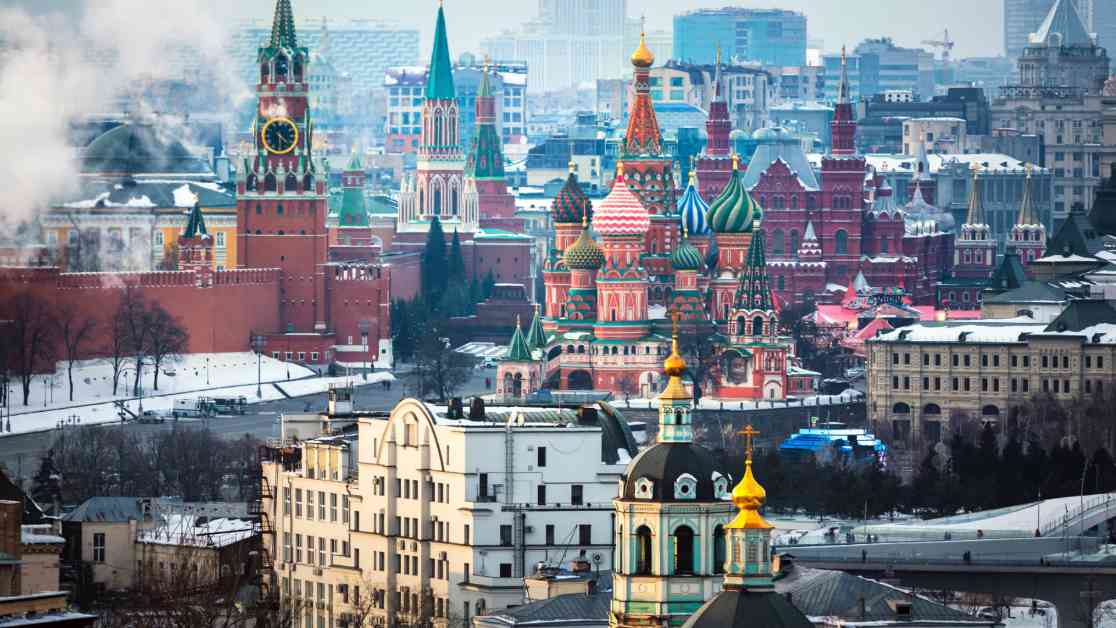Infiltrating Russian Communication: A U.S. Spy’s Strategy
In the late 1970s, American spy Jim Olson found himself stationed in Moscow, one of the riskiest and highest-stakes CIA stations in the world at the time. Olson, with over 30 years of experience overseas, was tasked with intercepting sensitive Russian information being transmitted via microwave signals. The stakes were high, as being caught could mean a lifetime in a Soviet prison.
Olson and his team were particularly focused on intercepting military and defense-related communications. However, their tactics were soon compromised when they discovered that the Russians were planning to move their communications underground, making it more secure and difficult to intercept. Despite this new challenge, Olson remained determined to stay ahead of the game.
In a recent episode of CNBC’s original podcast series “The Crimes of Putin’s Trader,” Olson shared his experiences with Eamon Javers, shedding light on the dangerous mission he embarked on to maintain access to critical intelligence. The series, which delves into a criminal network involving wealthy Russian hackers stealing from U.S. investors, features interviews with FBI agents, prosecutors, and spies like Olson, providing a closer look at the inner workings of this illicit enterprise.
As satellite images confirmed the Russians were already digging tunnels for their underground communication cables, Olson and his team knew they had to act fast. They decided to take a bold approach and go after the cables directly. Olson, along with two other operatives, was trained on how to tap into the underground network covertly, a mission that would test their skills and courage to the limit.
Disguised as a Russian peasant, Olson embarked on a risky journey to reach the underground tunnels. Taking a public bus to the countryside, he navigated a route patrolled by militia before breaking into a manhole along a highway. As he descended into the dark tunnel, he remained vigilant for any signs of danger, from poisonous gas to potential Russian police presence. The mission was nothing short of a real-life “Mission Impossible” scenario, where fear was overshadowed by a deep sense of duty and determination.
When asked about the psychological aspect of such high-stakes missions, Olson emphasized the singular focus and dedication required to carry out such operations. Fear, he explained, was secondary to the mission at hand, as the sense of accomplishment and contribution to national security far outweighed any personal concerns. For spies like Olson, the motivation to serve their country and fulfill their duties was paramount, driving them to take on perilous assignments with unwavering resolve.
Reflecting on the weight of the responsibilities entrusted to him by his country, Olson expressed humility and gratitude for the opportunity to make a significant impact on national security. The sense of duty and honor that comes with serving as a spy is a heavy burden, but one that Olson and his colleagues willingly bear in service to their nation.
Subheadings:
The High-Stakes Mission in Moscow
Jim Olson’s assignment in Moscow during the late 1970s placed him in one of the most dangerous and critical CIA stations worldwide. The task of intercepting sensitive Russian communications was fraught with risks, as the consequences of being caught were severe. Despite the challenges, Olson remained steadfast in his pursuit of crucial intelligence.
A Race Against Time
As the Russians planned to move their communications underground, Olson and his team faced a race against time to maintain access to valuable information. With satellite images confirming the construction of underground tunnels for communication cables, the CIA operatives knew they had to act swiftly to prevent a critical loss of intelligence.
The Courage and Sacrifice of Spies
The life of a spy is one of constant danger, sacrifice, and unwavering dedication to duty. Jim Olson’s account of his daring mission to tap into the Russian underground communication network exemplifies the courage and sacrifice required of those who serve in the shadows to protect their country’s interests.






















